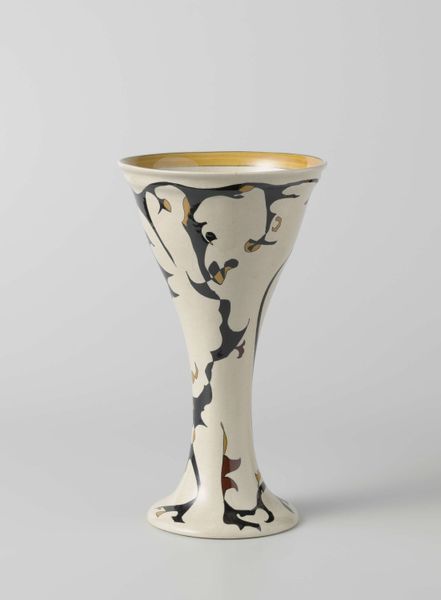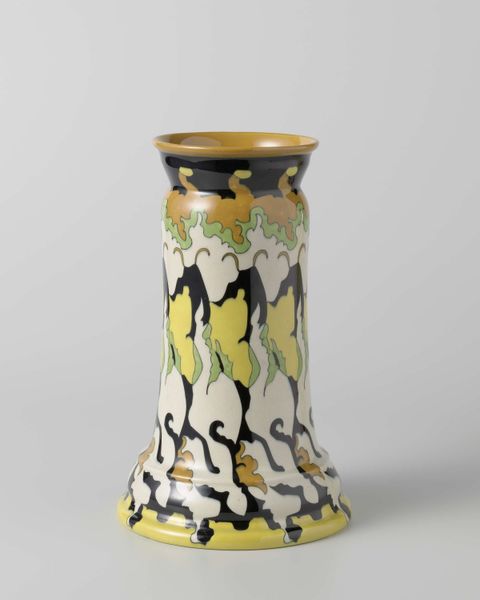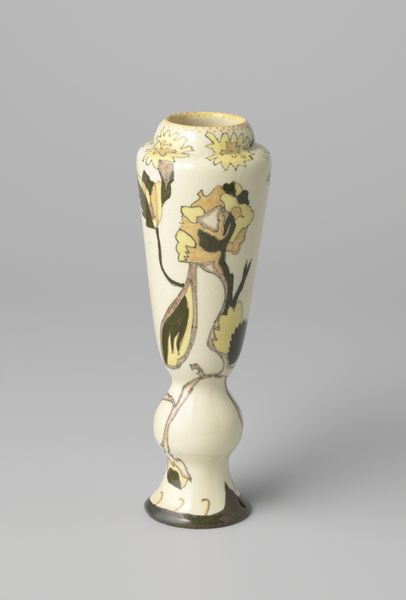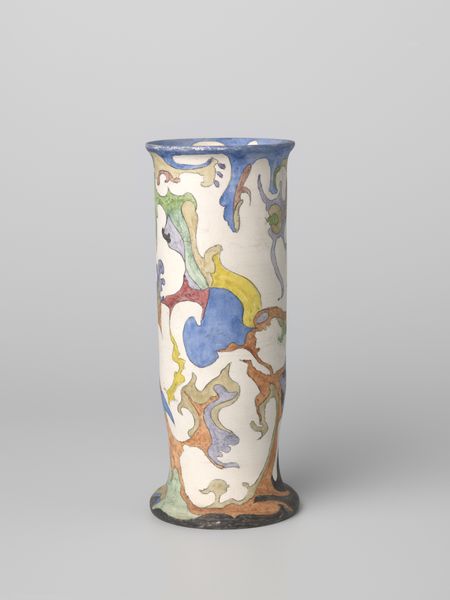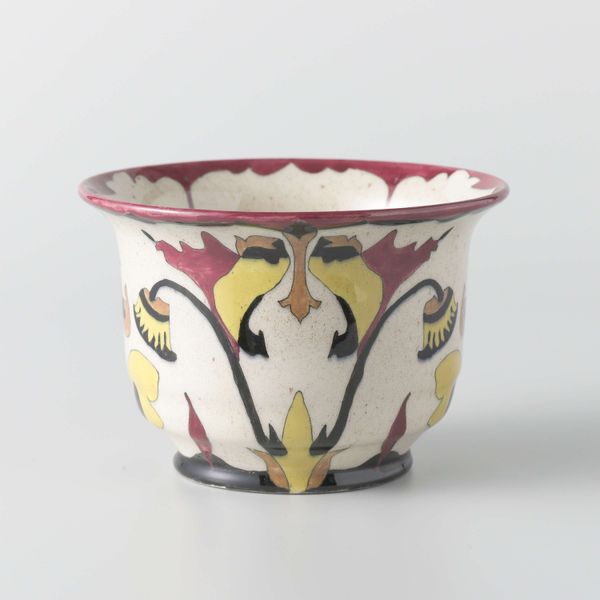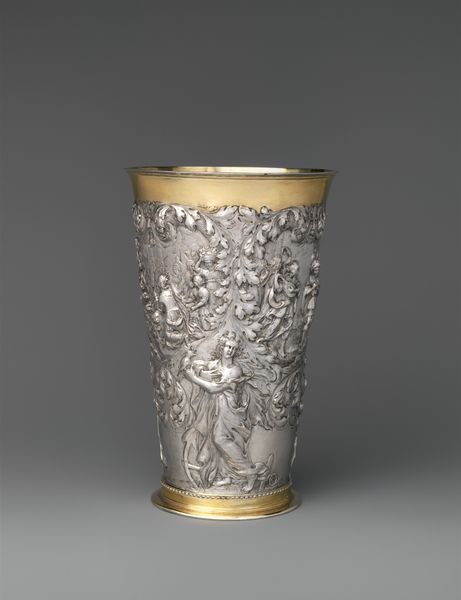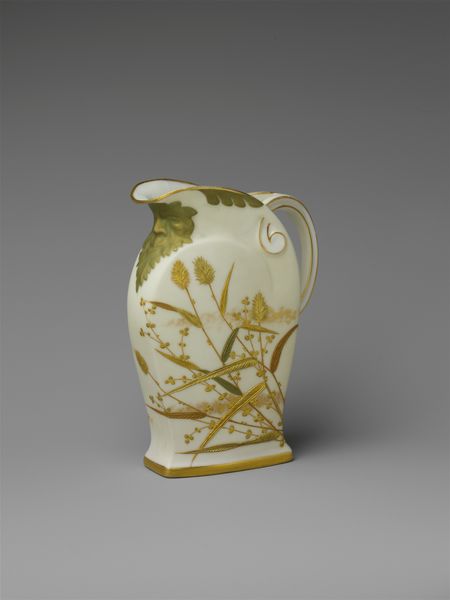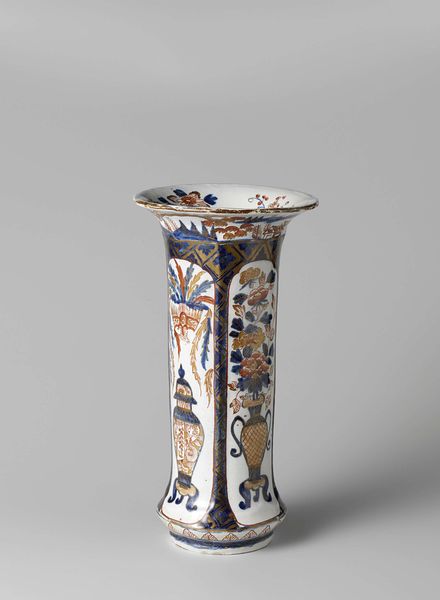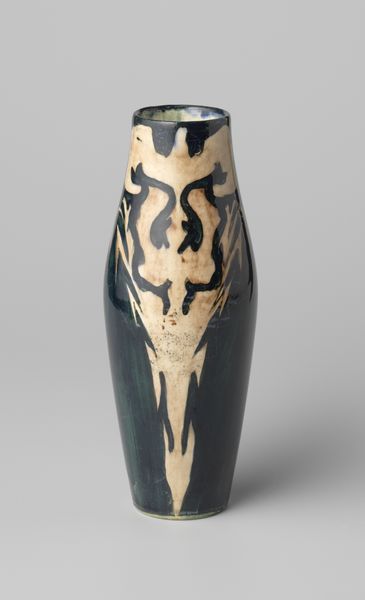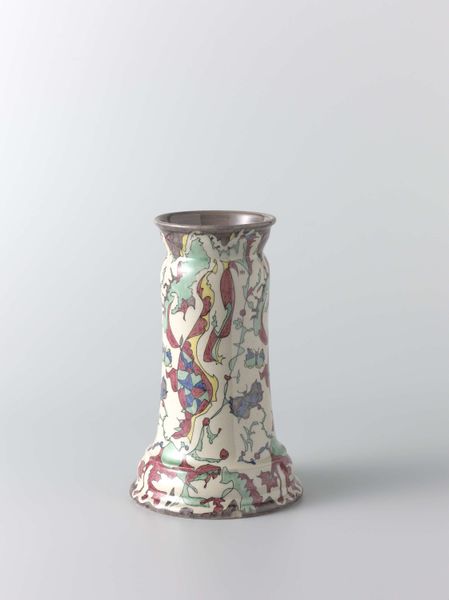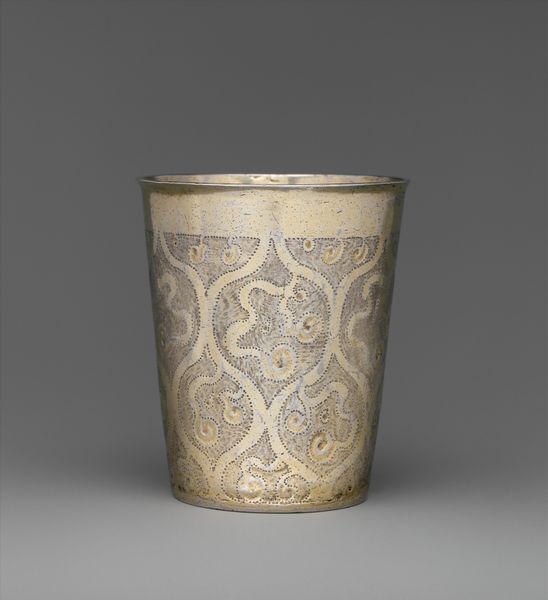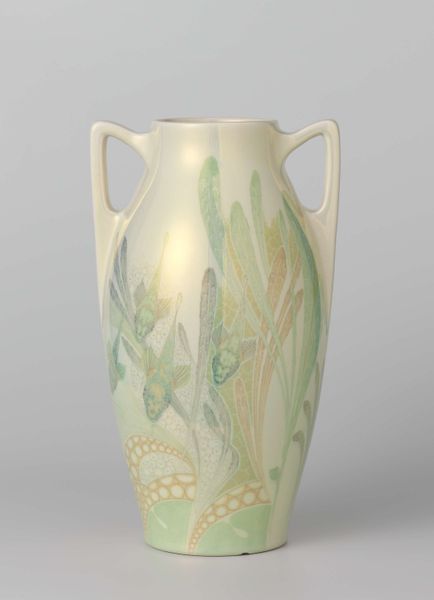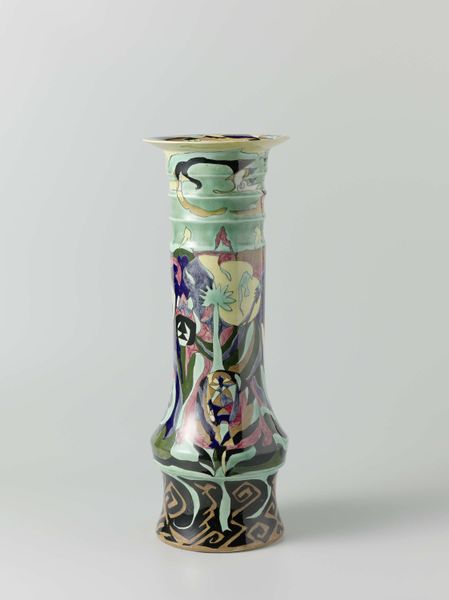
ceramic, earthenware
#
art-deco
#
ceramic
#
earthenware
#
geometric
#
decorative-art
Dimensions: height 12.6 cm, diameter 9.1 cm
Copyright: Rijks Museum: Open Domain
Editor: So, we're looking at a ceramic piece from 1923, "Two beakers with the ‘Hol’ (Hollow) pattern" by N.V. Plateelbakkerij Ram. The abstract geometric design really jumps out at me. What does this piece say to you? Curator: I see a reflection of the shifting societal values after World War I. Decorative arts like this became increasingly popular, democratizing artistic expression beyond the elite circles of fine art. What do you notice about the colour palette? Editor: It’s interesting – the yellow and black are quite bold against the off-white base. It’s eye-catching. Curator: Precisely. And that boldness, that embracing of geometric forms, speaks to the Art Deco movement. These designs weren't just aesthetically pleasing; they signaled a break from tradition, echoing broader socio-political changes. What was art's role in society at the time? Editor: Almost like a visual manifesto, right? Like these ceramics are contributing to this new, modern world. Curator: Exactly. Consider the accessibility of these pieces versus unique sculptures displayed only in art galleries. Art Deco brought art into everyday life. Editor: So it's not just about pretty designs, but about the social and cultural context in which those designs become popular and meaningful. I hadn't thought about it like that! Curator: Absolutely! Looking at art as part of history makes it come alive. It reflects, reinforces, or resists cultural norms. This "Hol" pattern becomes a tiny lens into that transformation. Editor: I'll never look at Art Deco the same way again. Thanks!
Comments
No comments
Be the first to comment and join the conversation on the ultimate creative platform.

